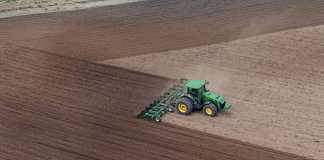Over the last few years, coffee production in South Africa has been more of a boutique industry limited to a handful of growers on minimal land. But as a coffee culture grows locally and internationally, the demand for beans suggests it may be the right time to revisit home-grown coffee. Robyn Joubert reports.
Coffee can be considered a true African crop, as it originated in the highlands of Ethiopia. According to Rainforest Alliance, coffee is the second biggest commodity traded globally after crude oil, and is worth billion annually. However, Africa’s share in annual production is on a steady decline. It is being overshadowed by the biggest producers worldwide, Brazil, Colombia and Vietnam. Even so, coffee remains the primary source of income for many rural people in central Africa.
SA has an embittered history with coffee. While South Africans are fairly large coffee consumers, drinking about 27 000 tons per year, the country is not even listed globally as a producer. Coffee was first grown here in the late 1880s at a missionary station in KwaZulu-Natal. A boom in coffee prices in the 1970s made government take a serious look at coffee production. In 1987, produced 1 800 tons of green (unroasted) coffee and was projected to produce more than 6 600 tons by the year 2000. By 1988, 1 525ha of arabica coffee was planted with a further 380ha approved.
Sadly the high cost of labour, plummeting international prices, pests and disease – especially the white coffee stem borer – put paid to that and ensured that very few coffee farms ever realised a profit. One by one the estates closed their doors and about five years ago, the Coffee Growers’ Association was disbanded.
Today, land dedicated to this boutique crop amounts to not more than 100ha, with only a few growers, Sabie Valley and Verster Coffee in Mpumalanga, Beaver Creek and Echo Valley in Port Edward, Assagay Coffee near Durban, and Sukkot Coffee near Hluhluwe. The right time But Schalk Schoeman, senior researcher at the Agricultural Research Council (ARC), says the time is right to fire up the coffee roasters once again. “The time for investing in coffee is now,” he says. “But one must be very astute about varieties planted and operational matters. Coffee is a high risk crop. You can lose or make a lot of money quickly. When things go wrong, it takes a long time to get back on the wagon.”
Counting against coffee production is the fact that it is an extremely labour-intensive crop. The coffee bush simultaneously bears flowers, green beans and ripe beans, so hand-picking of the ripe fruit is widely used. As a result, the crop is very expensive to harvest. Yet this can be to its advantage if a government is looking to create jobs in subtropical climates. “If managed optimally, coffee can provide work for many people. Poverty-affected areas such as Bushbuckridge in Limpopo and areas in KwaZulu-Natal are especially suited for coffee production.
In Zambia and Malawi alone, coffee provides work for many people outside the commercial sector.” But coffee is also suited to commercial estates, says Schoeman. “The ability for small and large farming systems to readily earn foreign exchange from the crop, makes it a unique wealth creator. In addition, it is an ideal pioneer crop for areas with poor infrastructure, as it is one of the few tropical horticultural crop products that can be stored for relatively long periods without perishing.” Schoeman is hopeful the National Department of Agriculture as well as the Mpumalanga agricultural department will get involved in identifying farmers grow coffee as a medium- to long-term venture.
Adding value
But why would coffee production succeed now when it has failed in the past? “The failure of coffee farms to turn a profit in the past can be attributed to poor socio-economic factors and outdated agronomic practices, particularly in pest and disease control. This time around, empowerment, agritourism and community involvement will be major components of the proposed projects,” explains Schoeman. He says coffee farms are proving successful in Hawaii and Australia – even where they are paying R80 per hour for labour. “So if they can make it work, I hate saying that we can’t. The important thing is to add value on the farm. By adding value to the product and by marketing the product pre-emptively in the developed world, great benefits could be realised in relation to initial costs,” says Schoeman. ”In addition, a significant volume of unnecessary and potentially polluting chemicals are annually applied at great cost to the producer and environment. It should be possible to reduce insecticide applications by synchronising sprays with vulnerable stages of the target pest insects.” Apart from leaf rust, which can be a big problem and can take years to remedy, SA does not have any of the major plant diseases that affect coffee production elsewhere. “This will significantly facilitate the production of organic coffee especially as the gene bank currently contains rust resistant varieties,” explains Schoeman.
Also counting in its favour is a stable coffee price at roughly R20 000/ton. In January, coffee prices stood at about 105,81 US cents per pound, slightly down from December 2006, yet 10,51% higher than the 2006 average, according to the Coffee Market Report, published by the International Coffee Organisation in January 2007.
Centralised processing unit Werner Schroeder, principal agricultural scientist at Lowveld Agricultural College in Nelspruit, Mpumalanga, has collected coffee processing equipment from defunct coffee farms in the Lowveld, and is establishing a processing factory at the college. “Processing equipment is very expensive and must be imported from Brazil or Germany, which deters farmers who want to add value to their green beans. Kenya, Tanzania and Malawi produce coffee in a way that we would like to implement – with a centralised processing unit and small-scale farmers on 1ha plots. About 60 tons of coffee per day can be run through the plant, which can service about 1 000ha of coffee,” explains Schroeder.
”The challenge with this product is that you can only harvest the ripe, red beans that ripen over a period of six to seven months. So while 1ha of coffee yields 3,5t/ha, you don’t get it all in one day.” Assagay Coffee near Cato Ridge in Durban, KwaZulu-Natal, has also been collecting disused equipment with large processing capabilities in preparation for bumper years ahead. “We have seen a 25% increase in sales from 2005 to 2006,” says owner Rick James. “Before this, there has only been small year-on-year increases. We have wanted to expand for years as there is plenty of interest from overseas, but they need such large volumes and we have been forced to turn it down. With our new equipment, we can process and roast 400kg of coffee a day.”
The James’s have about 25 000 trees on 40ha, with 12 000 trees currently bearing their first crop of about 12 tons. In October 2008, they will plant another 60 000 trees, which should increase tonnage to between 60 tons and 70 tons per year. But it’s still not enough for the overseas market, and plans are brewing to increase volumes. This is where the Department of Agriculture comes in. Giresh Naidoo, deputy manager, Ethekwini District, has done his homework and is waiting patiently to take the plunge into coffee. “From our investigations, coffee has good potential and is suitable for small grower involvement,” explains Naidoo. “We are in the planning stage with Assagay Coffee to start a coffee outgrower programme for small-scale farmers. We have identified 150ha of communal land in Ximba to start with, where Assagay Coffee will provide mentoring and training. They will also process and market the coffee under their brand name and export to the US,” says Naidoo.
A project proposal has been submitted for funding in the 2007/08 budget year, but nothing has been confirmed yet. If well managed, these role-players believe coffee could succeed in South Africa as an alternate crop. “It is traditionally more successful in Africa than other types of crops,” concludes Schroeder. “There are no problems with shelf life and theft is limited because there’s not much you can do with unprocessed beans. Yes, it is very labour intensive, but the demand and the markets are there.” |fw
SA’s growing coffee habit
There are positive signs that increasing hordes of coffee drinkers will propel the bitter black liquid from indulgence to habit, according to Euromonitor International’s “Hot Drinks in SA” 2005 report (published September 2006, www.euromonitor.com). “There is a growing coffee culture in South Africa. This is supported by a trend towards more premium coffees, such as origin-specific coffees, as disposable income increases in most consumer groups,” the report summarises. “Much has been done to attract new coffee consumers straight into premium branded coffee, bypassing the cheaper brands. The growing number of coffee kiosks and coffee shops that have sprung up are a direct response to the growing demand for quality coffee.”













